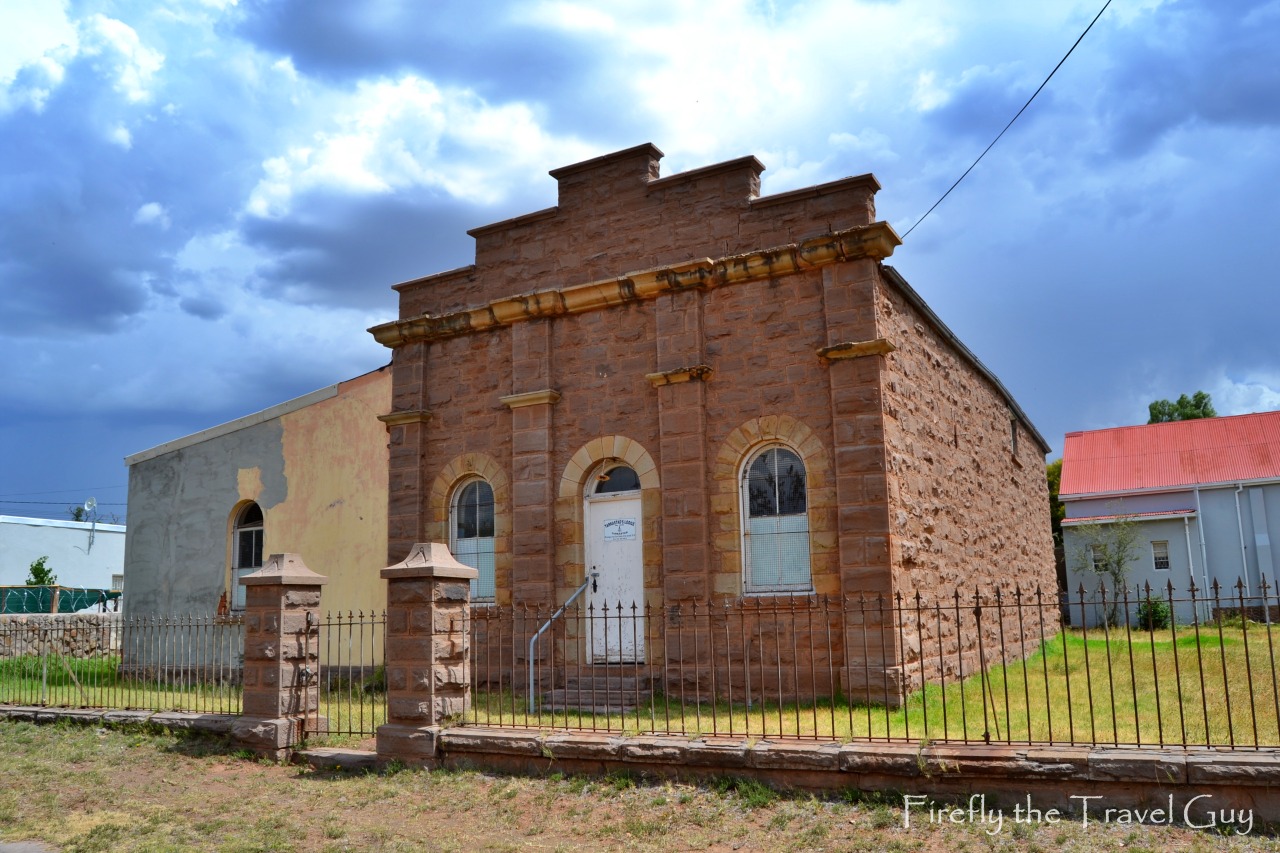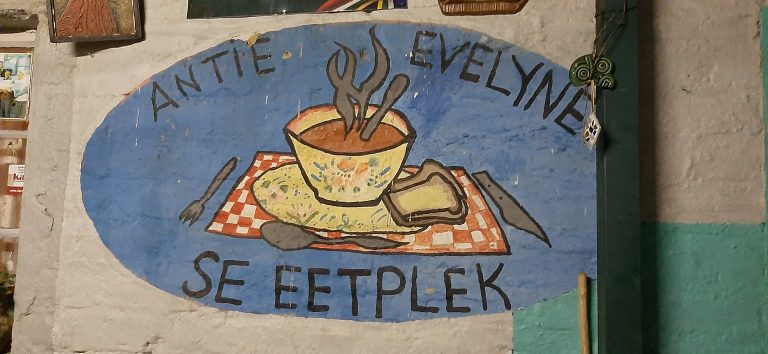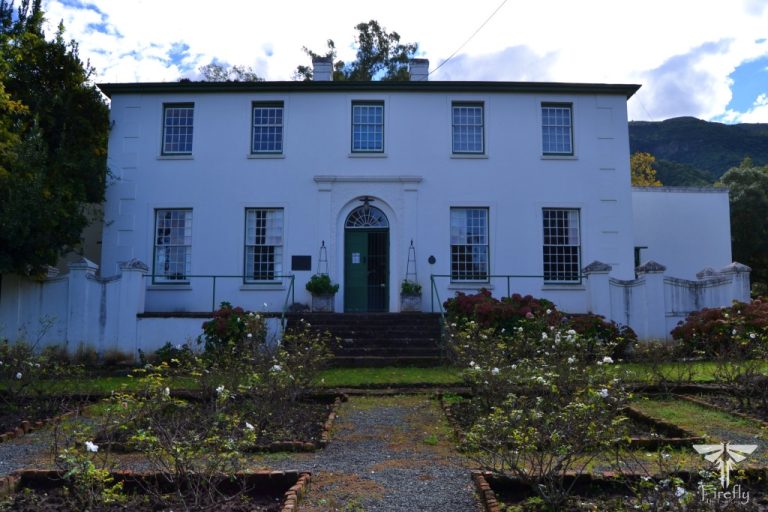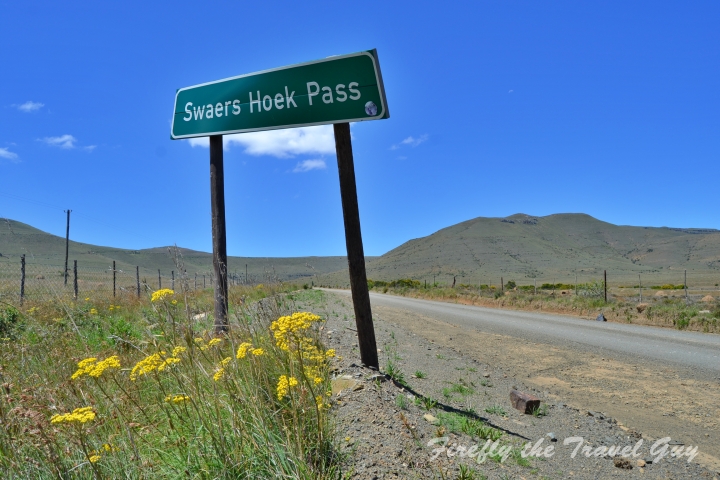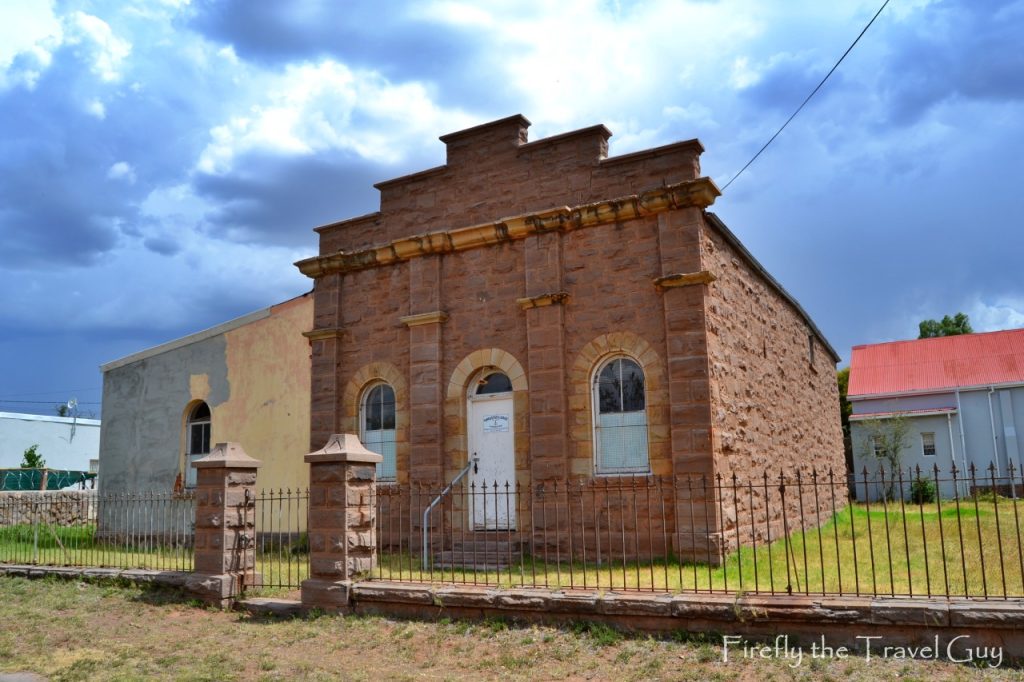
The first time we visited Tarkastad I knew it was going to be a very small town and I was expecting to see a beautiful historic church or two, hopefully a war memorial, lots of history and even more charm. One of the things I didn’t expect to find was a Masonic Lodge.
Driving through the town while doing some sightseeing, I noticed a small stone building. I pulled over to see what the sign on the door said and “Tarkastad’s Lodge. No 1939” along with the the Mason’s Square and Compasses. My fancy was tickled but all I could find on the World Wide Web was White Hope Lodge 1939, 1881, Tarkastad, Cape Colony. Literally just that. So was it established in 1939 or 1881. Was it for whites only and who was Hope?
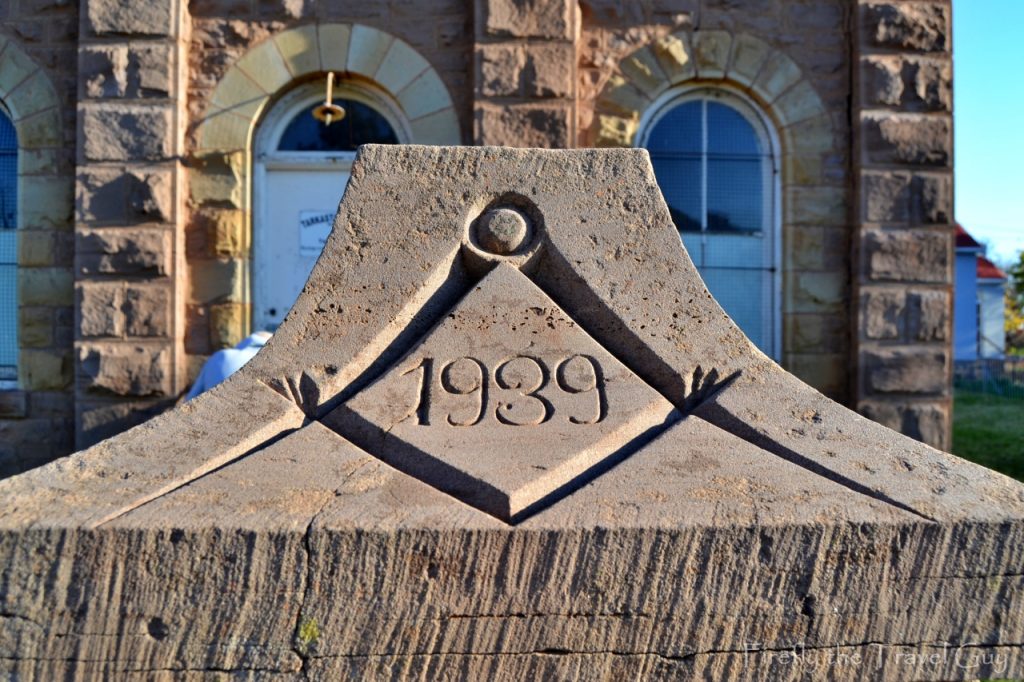
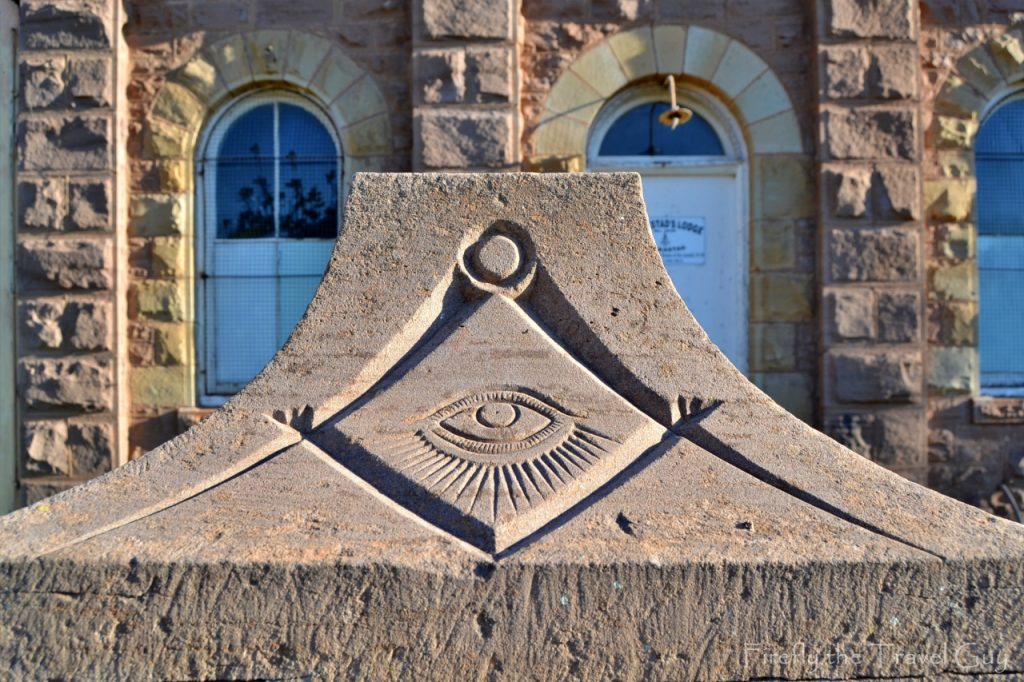
Seeing that I couldn’t find anything on the Tarkastad Masons’ Lodge, I shifted my research to the Freemasons in general. Mainly because I knew very little about them and the more I read up about it the more I realised how much misinformation there is about them out there.
Seems like there has been hundreds of conspiracy theories about Freemasonry described since the late 18th century. These theories seem to fall into three distinct categories: political (like saying the US and UK governments are controlled by the Freemasons from behind the scenes), religious (things like allegations of anti-Christian or Satanic beliefs or practices), and cultural.

So who or what are the Freemasons? Freemasonry is a fraternal organisation with a long history, tracing its roots back to medieval stonemason guilds. These guilds originated in the Middle Ages and these guilds oversaw the building of cathedrals and castles. Over time, these guilds evolved into fraternal societies with a focus on moral and philosophical teachings. Freemasonry is known for its emphasis on moral and ethical development, fellowship, and charitable work. They adhere to principles of brotherly love, relief (charity), and truth, and they use rituals, symbols, and allegories to convey these lessons. While historically a men-only organisation, some Masonic groups now admit women.
I think the reason there are so much misinformation about them is because they practise these rituals in secret and behind closed doors. And hey, everybody has the right to do so if they choose.

On my second visit to Tarkastad recently we stayed with my son in his flat at the old age home. Yeah, yeah, it’s a long story but also not. They have lots of space and he needed accommodation when he got his job in Tarkastad. One plus one equals two. Anyhow, I heard one of the ooms at Huis Tarka mention a meeting he had to go to and when I saw him again I asked him about it. Because I had a feeling. And my feeling was spot on. Oom Jacques was a Freemason and he attended their quarterly meeting that morning. He immediately offered to take me for a visit the next afternoon. Yes please! How could I say no?
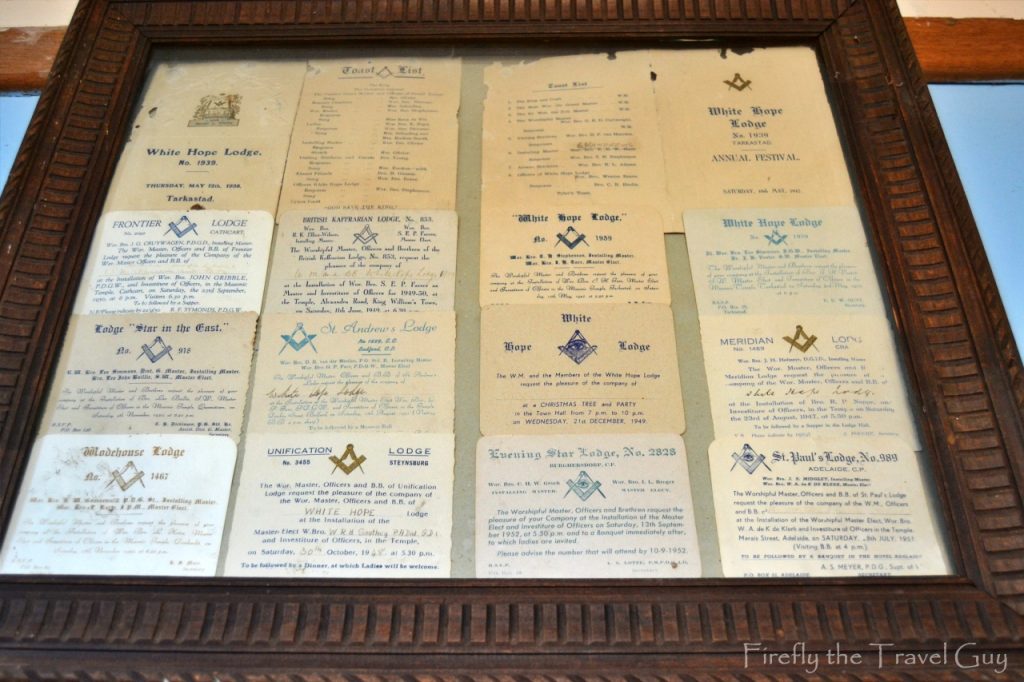
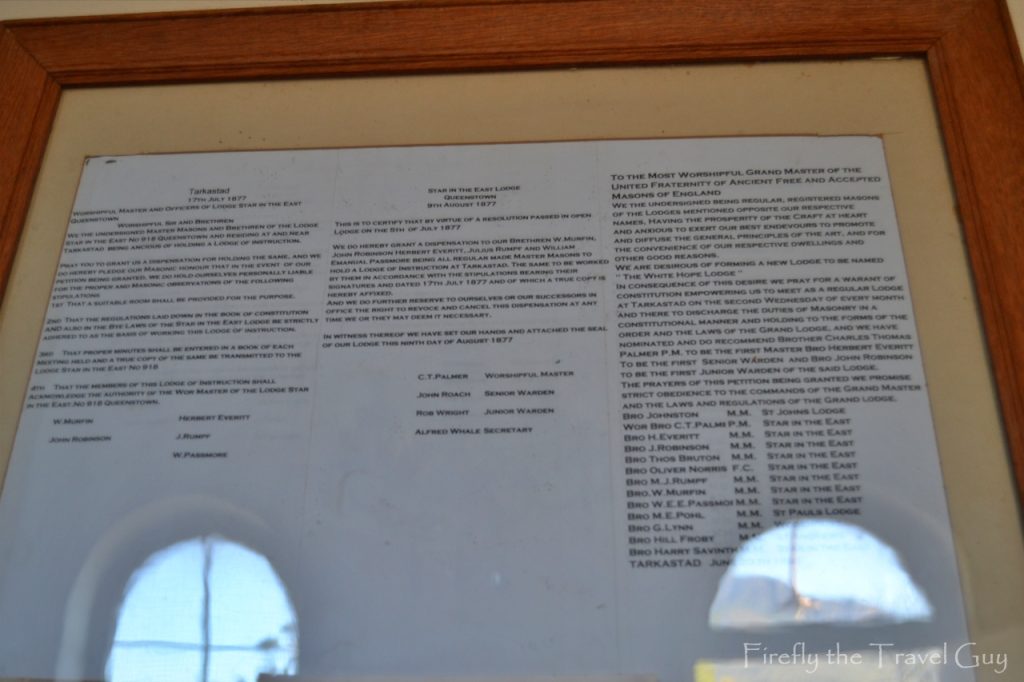
It turned out that Oom Jacques wasn’t just a regular Freemason, but a past Lodge Master of the Tarkastad Lodge, like his brother and their father before them. He was like a fountain of knowledge, not just about Freemasonry and the Tarkastad Lodge, but about the history of the town in general. I asked him if I’m allowed to take photos and he said yes. Just not in the Temple, or meeting room.
The first Masonic Lodge was established in 1717 in London. He told me that the local pharmacist, Mr White was advocating for a Lodge to be opened in Tarkastad and eventually his wish was granted. The Tarkastad Lodge was built in 1881 with stone that came from somewhere between Tarkastad and Cradock. The same as the Presbyterian Church next door. And I wouldn’t be surprised if its the same stone that the Dutch Reformed Church was built with as well. The Lodge was called the White Hope Lodge because of Mr White and his continued hope for a lodge to be built. The 1939 isn’t a year, but the lodge’s number. The Lodge’s Warrant of Constitution was established on 25 Oct. 1881 and the Lodge Consecrated on 13 March 1882.
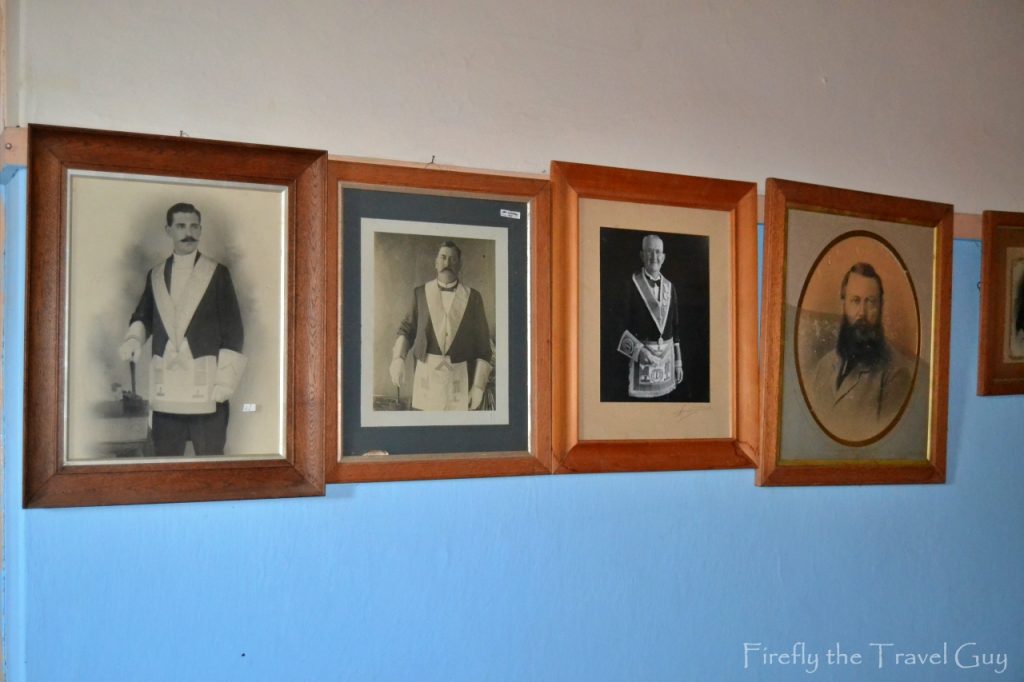
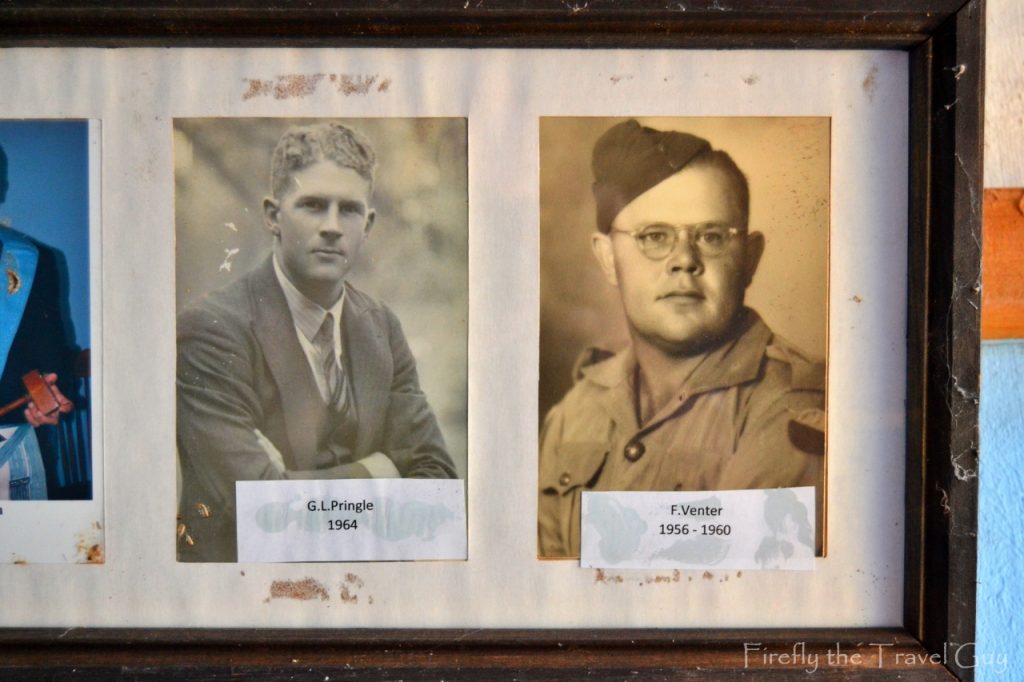
The small addition to the building was used as a church by the local Jewish community at some stage in the past, and acts as a small events space for the Masons. Somewhere they come together and enjoy a meal of a couple of drinks together. The main building’s walls are more than half a meter thick and it probably keeps most of the summer heat out. In the Temple he showed me around and explained a lot of the symbolism. Who sits where, who does what, the Masons’ tools, the checkerboard carpet and the bible they keep open during their meetings. The Freemasons will always have an, and I quote from Professor Google, “open Bible, or “Volume of Sacred Law,” present on the altar in most lodges as a symbol of the Great Architect of the Universe, representing the divine will and guidance. It’s not necessarily a specific version of the Bible, but rather any religious text recognized by the individual members of the lodge, such as the Quran or Talmud.”
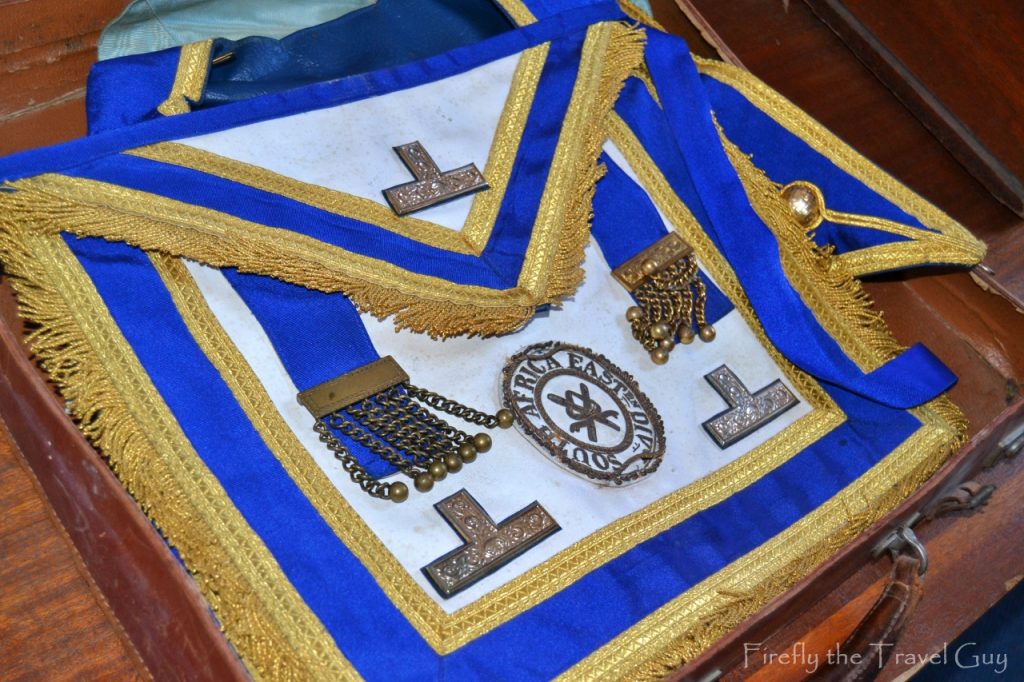
Oom Jacques even opened a case and showed me his own Masonic apron and accessories from when he was the Lodge Master.
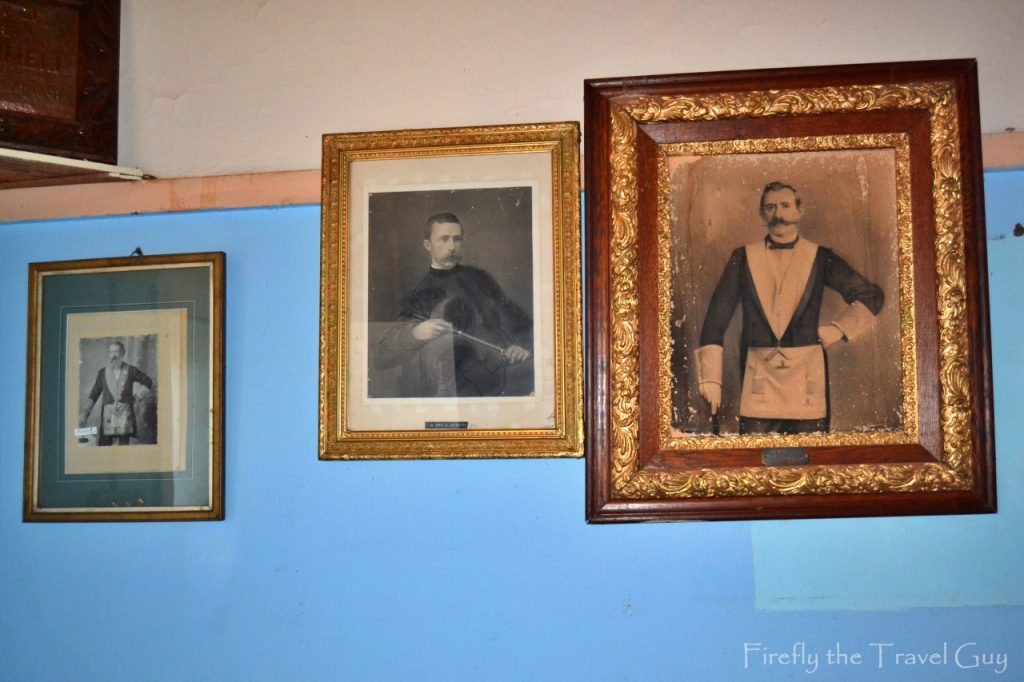
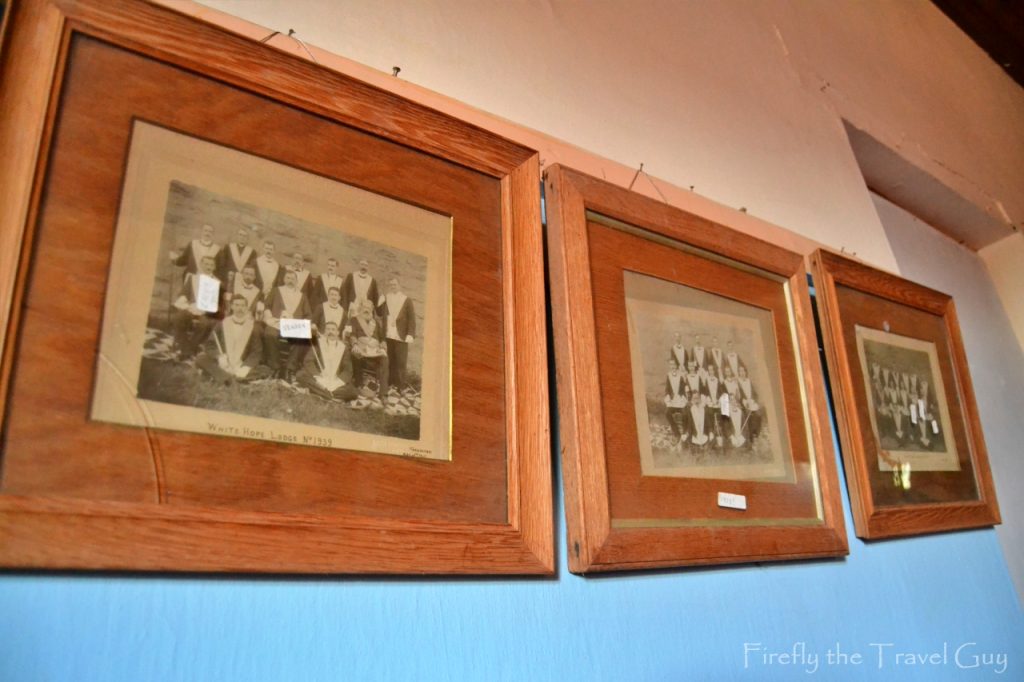
I’m sure this post will cause a wide range of comments and opinions, some probably very ignorant and uninformed. Personally I am very happy that I got the opportunity to discover more about something I knew very little about. I was encouraged to hear about the charity work the Masons do, but saddened to hear Oom Jacques telling me how the numbers of Freemasons in the platteland has dwindled and many Lodges closing down. I think one has to go through life with more of an open mind and embrace everybody’s beliefs, traditions, symbolism and differences

